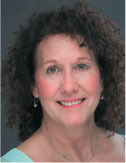
Managing the Case Manager
This story is based on true events; only the names have been changed to protect identities. Therefore, we will call the patient Stella and, as luck would have it, Stella was also a certified case manager. Of note, Stella is a healthy, middle-aged person who consistently works out and eats healthy. Despite Stella having an eventful experience with COVID-19, this article will identify the valuable role of a case manager and their effect on patient outcomes.
When COVID-19 was discovered a few short years ago, Stella experienced a relentless elevated temperature for several days. The fever was associated with weakness, fatigue and a lack of desire to eat or drink, resulting in a visit to the emergency department. There, intravenous hydration and medications were administered for a COVID diagnosis, followed by discharge to home. Administration of monoclonal antibodies was scheduled for two days later. Subsequently, treatment was on the seventh day after the fever began.
The waiting room was not utilized due to strict COVID guidelines. Unfortunately, Stella was discharged before her family returned. She was asked to wait outside the hospital for her transportation. Her profound fatigue and weakness persisted, making prolonged standing difficult. No seating was available outside the hospital, so Stella sat unattended on the ground.
For a short period after the monoclonal antibodies infusion, her appetite and fluid intake improved. She felt the path of recovery was underway. However, two days later, respiratory issues began. The following week, severe shortness of breath and lack of improvement led her back to the emergency room, where the same physician would be the treating her again.
The emergency physician discussed sending Stella back home on home oxygen and steroids. As a case manager and a nurse, and after previous failed home treatment, she knew that plan would not have positive results, so she pushed to be admitted. The attending physician also came in and again strongly promoted discharge. Stella advised him to review the hospital admission criteria, which supported inpatient hospitalization. If nothing else, she requested to be placed in an observation bed as oxygen saturations were 88% on room air and 90% on three liters of supplemental oxygen, and because she was experiencing wheezing, extreme shortness of breath, pain on inhalation and difficulty ambulating due to the fatigue. Subsequently, scanning was done, with a pulmonary embolism ruled out. Despite this, admission was ordered. The inpatient treatment plan included intravenous steroids, respiratory treatments, supplemental oxygen and a regular diet.
The next day, the hospitalist assessed and recommended discharge with continued outpatient treatment. Stella did not agree as she was not improving. With her knowledge, experience and symptoms, she knew the most appropriate treatment was continued inpatient care.
Upon admission, Stella reached out to a friend who was also a case manager. Later, the infectious disease physician assessed and recommended for case management to see her. Although the hospital case manager failed to visit in person, the floor nurse said she received a phone call from Barbara, the personal case manager friend, inquiring about Stella’s condition. Unfortunately, Stella’s condition continued to decline, making it difficult for her to continue voicing her concerns. The family and friend became concerned when Stella stopped answering and returning their phone calls. However, Barbara became Stella’s advocate. She kept the family informed while communicating with the hospital team, who could not agree on a treatment plan. The hospitalist wanted to send Stella home, and the infectious disease physician wanted to start antibiotics, which was not a proven best practice.
The next morning, both physicians appeared for a bedside conversation. The infectious disease physician looked concerned and explained they had been talking with Barbara and the family. The discussion was around the use of antibiotics and what was best practice. Stella asked the doctor how his best practice was working on her recovery so far. COVID appeared to have the upper hand for almost two weeks without improvement and continued decline. The hospital case manager called on the room phone and asked Stella why she did not answer her call. Stella requested for the two case managers to connect and collaborate. Luckily, the floor nurses were great, and one said she would also advocate for Stella to ensure Barbara knew what was going on, keep her family informed and unify the physicians.
Late morning, the antibiotics were started. Surprisingly, the next afternoon, wheezing decreased and Stella ate and drank and felt more mobile. The infectious disease physician visited and expressed his surprise with Stella’s progress. Oxygen weaning was discussed, as well as subsequent discharge the next morning if things went well. The hospitalist agreed.
As hoped, the oxygen was weaned, and saturations improved to 93% while ambulating! Discharge plans were discussed, and although the hospital case manager was unreachable, Barbara continued to advocate. Unfortunately, home oxygen criteria were not met; however, orders were written for short-term self-pay use, which provided peace of mind. The direct-care nurse assisted with a safe discharge that evening.
Barbara followed up after hospital discharge. She continued to encourage mobility with rest breaks as tolerated, and proper nutrition, hydration and oxygen use as needed for recovery. Other than one conversation with the hospital case manager while inpatient, Stella never heard from her again. Luckily, Barbara was a skilled case manager. Although slow and complicated with prolonged shortness of breath with strenuous activity, Stella was used to working out, so home rehabilitation went smoothly.
Being a case manager, Stella reflects on how instrumental a case manager is in a patient’s care, especially during her own illness. She pondered how she could have done things differently if the roles were interchanged. Considering the hospital’s care model and knowing their beds were full could have led to the decreased communication with the inpatient case manager. She also better understands how isolation and the lack of family support appear to affect recovery. A case manager’s role is to advocate for the patient, and without their advocacy, care is fragmented. Today, Stella is healthy and happy, and thankful for case managers.





